May 7 to May 12
After unification activists beheaded the Yoichi Hatta statue in the spring of 2017, the Tainan City government acted quickly and unveiled its new head on May 7, a day before the 75th anniversary of his death. Hatta was on his way to Japanese-occupied Philippines during World War II to work on an irrigation project when an American torpedo sank his ship.
Yes, it can be argued that Hatta’s contributions to Taiwan, most notably designing the Chianan Irrigation Canal, were done in service of the Japanese colonizers who wanted to exploit Taiwan for its resources. But being able to achieve such a feat — it’s still the largest irrigation system in Taiwan — in just his early 30s is impressive, and the canal did greatly transform the livelihood of farmers living in the Chianan Plains (嘉南平原). The Wushantou Reservoir (烏山頭水庫), which was built in conjunction with the canal, was the largest in Asia at time of completion in 1930.
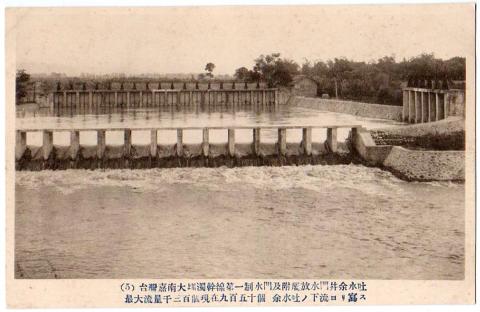
Photos courtesy of Wikimedia Commons
Hatta came to Taiwan in 1910 fresh out of college, and made the colony his home until his death. After the Japanese defeat, his wife Sotoyo committed suicide by jumping into the Wushantou Reservoir. The couple’s grave still lies nearby, guarded by the Hatta statue, which went through an intriguing journey of its own. Today, visitors can learn about the life of Hatta and his staff who lived near the reservoir during its construction at the Yoichi Hatta Memorial Park.
RICE COLONY
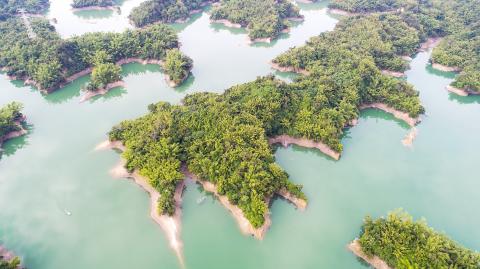
Photos courtesy of Wikimedia Commons
According to a biography by Chen Wen-tien (陳文添), Hatta was known for his progressive attitude during his studies, hoping to do something useful instead of just obtaining a good position. His classmates often told him that his talent would be stifled in conservative Japan, and he would be better off heading overseas. At that time, Japan had taken over Taiwan, Korea and the southern half of Sakhalin Island. Hatta chose Taiwan.
While local anti-Japanese resistance had largely subsided by 1910, scattered rebellions still took place over the years, including the Miaoli Incident of 1913 and the Tapani Incident of 1915, which marked the last armed revolt involving Han Chinese during the Japanese era.
The colonizers were able to run Taiwan without financial aid from Japan starting in 1905, and they sought to quickly develop the island’s economy. Taiwan was designated as an agriculture colony to help supply rice and sugar to Japan, which suffered from grain shortages after industrialization. The problem, the colonizers noticed, was that while Taiwan had the environment and climate for rice production, it was far from maximizing its potential due to sub-par irrigation.
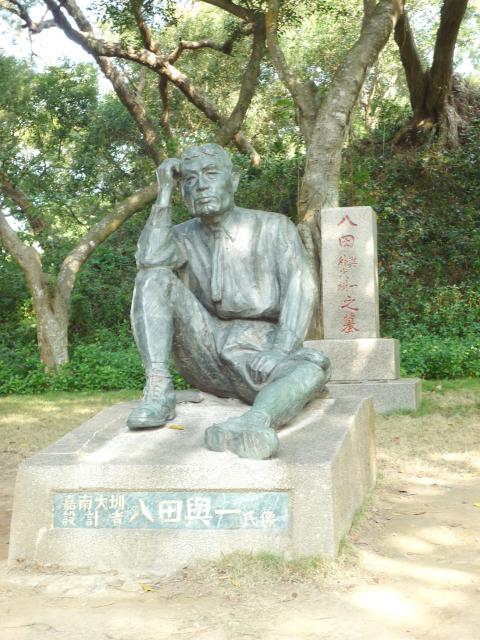
Photos courtesy of Wikimedia Commons
In 1910, there were about 20 independent canals running through the Chianan Plain. But before the Chianan irrigation canal was completed, about two-thirds of the plain did not have proper access to water, which was needed for rice production. Despite having the largest farmable area in Taiwan, its economy lagged far behind other districts, contributing to less than 20 percent of the colony’s total rice production in 1921.
Hatta first helped design the Taoyuan Irrigation Canal, which commenced construction in 1916. The authorities then turned to the Chianan plains. The landscape required a totally different project, with a dam upstream to store water and a way to conduct the water to the ocean. The plan was finally set in motion in 1920, especially after the 1918 rice riots in Japan, with the formation of a cooperative for the project. Hatta left his government post to head the project, eventually moving to the Wushantou area in 1922 after staff dormitories were built.
ARGUING WITH AMERICANS
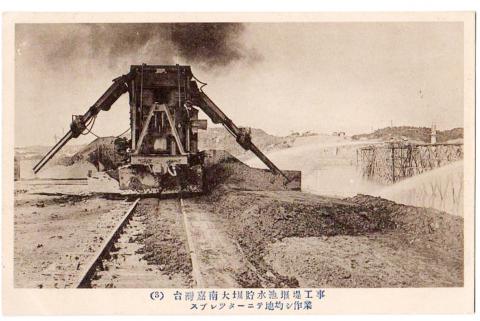
Photos courtesy of Wikimedia Commons
Of course, the construction process was arduous with many setbacks and casualties. The Great Kanto Earthquake of 1923 also took place during this time, and the project’s budget was slashed to make way for disaster relief funds, leading to more delays.
A notable episode took place in 1924, when the colonial government invited American engineer Joel D. Justin, who was the leading authority in semi-hydraulic fill dams, to inspect the progress. According to another biography by Chen Cheng-mei (陳正美), Hatta was not pleased, taking it as a sign that his superiors were still skeptical about the project. Chen writes that Justin wrote a highly critical report, and Hatta spent his New Year vacation researching and writing a rebuttal. The government went with Hatta’s version, and Justin said he would only accept the decision if the government sent him statistics each year to show that Hatta was right.
“If he is right, it will definitely greatly change how we design semi-hydraulic fill dams,” Justin said. “And Hatta’s name will be forever etched in civil engineering history.”
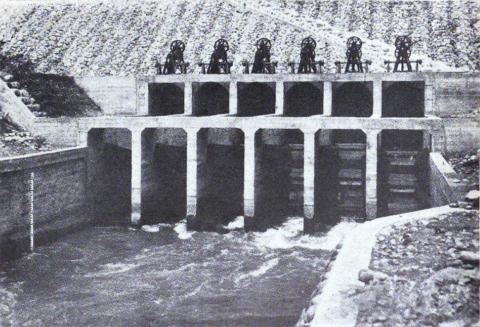
Photos courtesy of Wikimedia Commons
In 1930, the 10-year construction project finally wrapped up. Hatta was now a 44-year-old man with graying hair and eight children. With the project complete, Hatta was summoned back to Taipei, saying goodbye to his longtime staff and local residents.
THE STATUE SAGA
Three years after the dam’s completion, production in the Chianan plains increased threefold and the lives of residents greatly improved. Before he left, he and his staff built a memorial for the 134 souls who perished during construction. There was no distinction between Taiwanese and Japanese; the names are listed in order of death.
Afterward, his subordinates suggested building a statue of him to commemorate the great feat. Hatta reluctantly agreed, but remained adamant that he be depicted wearing regular work clothes in a casual pose instead of the usual upright stance. The statue was erected in 1931, showing Hatta sitting on an embankment deep in thought.
When World War II broke out, many statues around the colony were uprooted and melted as raw material for the battlefield. In 1944, the Hatta statue disappeared. After the war, irrigation officials found it in a storage room — but due to the anti-Japanese political climate under the Chinese Nationalist Party (KMT), the Chianan Irrigation Association staff continued to keep it hidden for decades.
The association attempted to restore the statue in 1976, but anti-Japanese sentiment was high again due to Japan breaking ties with Taiwan in 1972 and their request was denied. It was finally returned to its original place in 1981 until the beheading incident opened another chapter in its long saga.
Taiwan in Time, a column about Taiwan’s history that is published every Sunday, spotlights important or interesting events around the nation that have anniversaries this week.

May 18 to May 24 Pastor Yang Hsu’s (楊煦) congregation was shocked upon seeing the land he chose to build his orphanage. It was surrounded by mountains on three sides, and the only way to access it was to cross a river by foot. The soil was poor due to runoff, and large rocks strewn across the plot prevented much from growing. In addition, there was no running water or electricity. But it was all Yang could afford. He and his Indigenous Atayal wife Lin Feng-ying (林鳳英) had already been caring for 24 orphans in their home, and they were in

On May 2, Chinese Nationalist Party (KMT) Chairman Eric Chu (朱立倫), at a meeting in support of Taipei city councilors at party headquarters, compared President William Lai (賴清德) to Hitler. Chu claimed that unlike any other democracy worldwide in history, no other leader was rooting out opposing parties like Lai and the Democratic Progressive Party (DPP). That his statements are wildly inaccurate was not the point. It was a rallying cry, not a history lesson. This was intentional to provoke the international diplomatic community into a response, which was promptly provided. Both the German and Israeli offices issued statements on Facebook

President William Lai (賴清德) yesterday delivered an address marking the first anniversary of his presidency. In the speech, Lai affirmed Taiwan’s global role in technology, trade and security. He announced economic and national security initiatives, and emphasized democratic values and cross-party cooperation. The following is the full text of his speech: Yesterday, outside of Beida Elementary School in New Taipei City’s Sanxia District (三峽), there was a major traffic accident that, sadly, claimed several lives and resulted in multiple injuries. The Executive Yuan immediately formed a task force, and last night I personally visited the victims in hospital. Central government agencies and the

Australia’s ABC last week published a piece on the recall campaign. The article emphasized the divisions in Taiwanese society and blamed the recall for worsening them. It quotes a supporter of the Taiwan People’s Party (TPP) as saying “I’m 43 years old, born and raised here, and I’ve never seen the country this divided in my entire life.” Apparently, as an adult, she slept through the post-election violence in 2000 and 2004 by the Chinese Nationalist Party (KMT), the veiled coup threats by the military when Chen Shui-bian (陳水扁) became president, the 2006 Red Shirt protests against him ginned up by